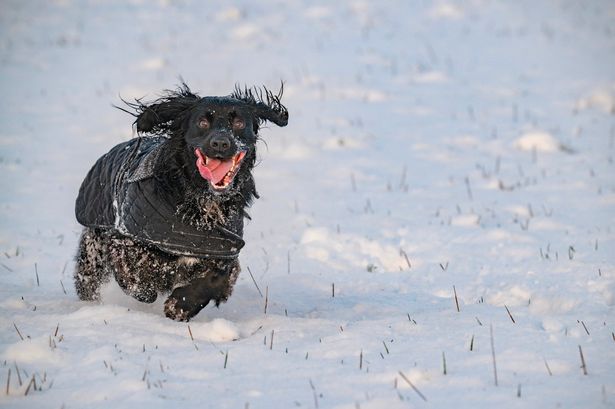The United Kingdom experienced a significant drop in temperatures during the first week of December, with certain regions, particularly the Scottish Highlands, facing sub-zero conditions. Drumnadrochit, a village nestled on the shores of the famed Loch Ness, recorded a chilling -5.5°C on Tuesday, marking a stark transition into a true winter weather pattern. This frigid spell is anticipated to persist throughout the remainder of the week, blanketing much of the country in a sustained period of freezing temperatures. The sudden onset of this cold snap has prompted warnings from meteorological agencies and health officials, urging individuals to take necessary precautions against the potential hazards associated with prolonged exposure to such extreme weather.
This abrupt plunge in temperature can be attributed to a shift in atmospheric circulation patterns. A high-pressure system, characterized by stable and sinking air, has established itself over the UK, allowing for the formation of clear skies and consequently, rapid radiative cooling. The absence of cloud cover prevents the earth’s surface from retaining heat, leading to a significant drop in temperature, especially during the overnight hours. Furthermore, northerly winds, originating from the Arctic regions, have been funneling cold air masses across the UK, exacerbating the already frigid conditions. This combination of factors has created an environment conducive to sustained sub-zero temperatures, particularly in areas further north and at higher altitudes.
The impact of this prolonged cold spell is expected to be widespread, affecting various aspects of daily life. Transport networks are likely to experience disruptions, with potential delays and cancellations to road, rail, and air travel. Icy roads and pavements pose a significant safety hazard, increasing the risk of accidents and injuries. Vulnerable populations, such as the elderly and homeless individuals, are particularly susceptible to the adverse effects of extreme cold, with increased risk of hypothermia and other cold-related illnesses. Health authorities are advising people to dress warmly in layers, limit time spent outdoors, and check on vulnerable neighbors and family members.
Beyond the immediate concerns for human health and safety, the sustained freezing temperatures also have implications for the natural environment. Wildlife, particularly those species adapted to milder winters, may face challenges in finding food and shelter. Frozen water sources can limit access to drinking water for animals, while prolonged snow cover can make foraging difficult. Plants and crops are also at risk of damage from frost and freezing temperatures, potentially impacting agricultural yields. The prolonged cold can also affect energy demand, with increased reliance on heating systems likely to strain energy supplies and contribute to higher energy costs.
Looking ahead, while the current forecast predicts a continuation of these frigid conditions for the rest of the week, the longer-term outlook remains uncertain. Meteorological models suggest the possibility of a gradual moderation in temperatures towards the end of the week, with the potential for milder air to move in from the west. However, the exact timing and extent of this temperature recovery remain subject to change. It is essential to continue monitoring weather forecasts and heed advice from relevant authorities to ensure preparedness for any potential shifts in weather conditions. The potential for further cold snaps later in the winter season cannot be ruled out, highlighting the importance of maintaining vigilance and preparedness for challenging winter weather.
In conclusion, the recent plunge in temperatures across the UK, with Drumnadrochit in the Scottish Highlands experiencing a particularly frigid -5.5°C, underscores the arrival of true winter weather. The confluence of atmospheric conditions, including a high-pressure system, clear skies, and northerly winds, has created an environment conducive to sustained sub-zero temperatures. The impact of this cold snap is expected to be wide-ranging, affecting transport networks, vulnerable populations, wildlife, and energy demands. While the forecast suggests a potential moderation in temperatures towards the end of the week, the longer-term outlook remains uncertain, emphasizing the need for continued monitoring and preparedness for potentially fluctuating winter conditions. The current cold spell serves as a reminder of the importance of taking appropriate precautions to protect oneself and others from the potential hazards associated with extreme cold weather.














